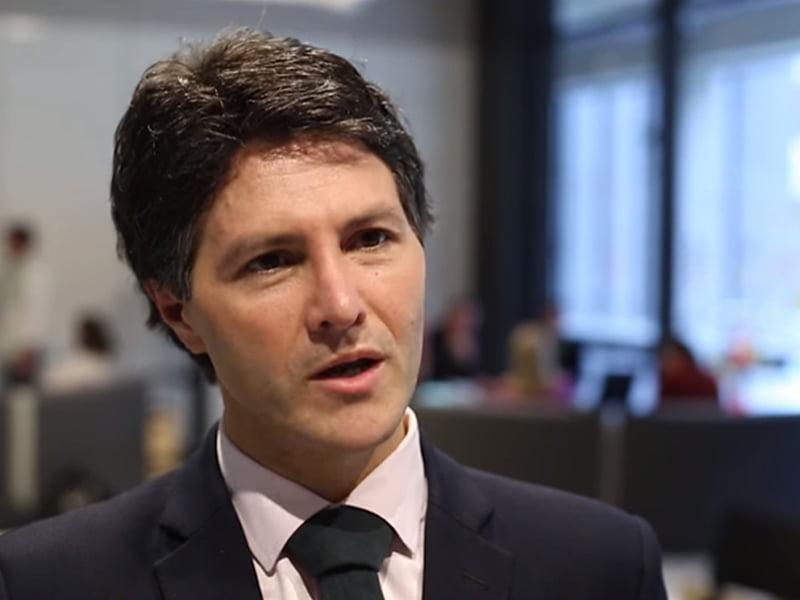The New South Wales Government will detail $536 million in digital health infrastructure spending when the state’s Treasurer Dominic Perrottet hands down his first budget on Tuesday morning.
While hospital upgrades and housing affordability are shaping as the mainstream headline grabbers in 2017, the significantly expanded investment in health ICT infrastructure marks a new front in the state’s drive to improve digital service delivery through better use of data, and smarter technology investments.
The government outlined earlier this week plans for $1 billion in new funds for hospital upgrades. But Finance Minister Victor Dominello says the half-billion being ear-marked for NSW health ICT investment was the more exciting – with the potential to deliver not just better health outcomes, but better efficiencies across the economy as well.

Mr Dominello has been the key driver of digital reform in New South Wales and the delivery of better government services.
“That $536 million is a huge investment in digital infrastructure in health,” Mr Doninello told InnovationAus.com.
“We are lucky – because of good management in New South Wales – where we have a string budget position, and where we have the flexibility now to make serious investments in digital infrastructure,” he said.
The new tech spending on health ICT would be detailed in the Tuesday budget, but is expected to be a windfall for the sector, including startup innovators. The new ICT spending would provide a digital infrastructure layer that would enable new services, in addition to providing an efficiency boost.
The new money for eHealth infrastructure follows significant investments since 2014 in building the NSW public service’s digital capability, including through the creation of ServiceNSW and its data centre consolidation program, and more recently launch of its Data Analytics Centre.
Mr Dominello said the digital investments don’t get talked about in the mainstream as much as other government spending – but that they delivered disproportionate value in terms of better services delivered, costs reduced, and friction removed.
“We’re constantly talking about infrastructure in NSW … [but] it’s not just about social infrastructure [like schools and hospitals] or heavy infrastructure like roads and rail,” Mr Dominello said.
“For mine, the sexiest infrastructure is the one that we don’t really talk about [much] and that’s the data and digital infrastructure,” he said.
“That’s the infrastructure [spending] that’s really going to power our state and our nation in future. That’s our guarantee for success, I have no doubt about it.”
Speaking at the launch of platform process automation giant ServiceNow’s new Australian headquarters in Sydney, Mr Dominello said other Australian governments were now following the NSW lead in building out better data handling and analytics capability, and citizen centric digital strategies.
Mr Dominello said the NSW Government’s Digital Analytics Centre – affectionately called the DAC – had been a huge success in helping to build better services. A recent project involved a program to help identify insurance fraud related to Compulsory Third Party greenslips, which he said had uncovered that fraud was costing consumers as much as $75 per green slip.
But as successful as the DAC had been – and it is now being mimicked by programs in the Commonwealth, as well as Victorian and South Australian governments – Mr Dominello cautioned against expecting the program to get additional funding through the Tuesday budget.
The DAC he said had been fully funded in forward estimates at launch. “The DAC will never be big. It’s meant to be small and agile.”
“I don’t want people associating more money with better outcomes … it’s about being agile.”
Meanwhile, ServiceNow’s Australia and New Zealand managing director David Oakley said Australia had been a priority target for investment by the company, resulting in the decision to base one of eight ‘twin data centres’ in Australia located in Sydney and Brisbane.
He said that early investment meant that ServiceNow had now located its APAC customer service and support hub in Australia, with about 15 per cent of the company’s support staff based in Sydney and providing global support on a ‘follow the sun’ model.
Mr Oakley said the company had investigated other locations in the region for the support hub, but kept it in Australia based on the good access to technical skills, access to diverse language skills, and the service culture of the technical workforce.
“The prioritisation of digital technology has been a focus for Australian government and business over the last three to five years, and has been a catalyst for ServiceNow’s continued growth and investment in the region,” Mr Oakley said.
“With continuing technological advancements and the swell of data businesses must manage, finding new ways to enhance productivity will be core to business success and economic growth.”
Do you know more? Contact James Riley via Email.

